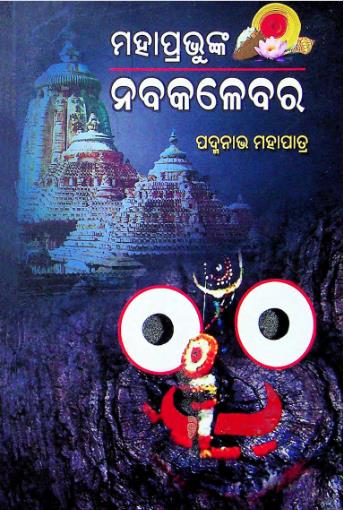In his 2015 essay Mahaprabhunka Nabakalebar, Padmanabh Mahapatra delves into the profound significance of the Nabakalebar festival associated with Lord Jagannath in Puri, Odisha. This festival not only embodies the spiritual essence of Lord Jagannath but also emphasizes the rich cultural and traditional heritage of Odisha.
The Nabakalebar festival occurs once every 12 to 19 years and involves the ceremonial replacement of the deities in the sanctum sanctorum of the famous Jagannath Temple. The term ‘Nabakalebar’ translates to ‘new body,’ symbolizing the renewal of the divine presence through the manifestation of fresh wooden idols carved from sacred trees. This process is steeped in rituals, beliefs, and age-old customs that are meticulously observed by the devotees and priests alike.
Mahapatra starts his essay by outlining the historical and spiritual context of this festival. He mentions how it ties back to the ancient scriptures and texts, narrating the legend of Lord Jagannath’s idol, which is believed to house the essence and energy of the divine. The significance of the Nabakalebar festival goes beyond mere physical renewal; it embodies the belief that the soul of the deity is transferred from the old idol to the new one, signifying the eternal nature of divinity and its unbroken connection with humanity.
The essay highlights the elaborate rituals that precede and accompany the Nabakalebar. Carpenters known as ‘Daru Brahmas’ meticulously select sacred trees, often from the Neem and Sal species, which undergo a ritualistic process before they are crafted into the new idols. This craft is not merely an act of artistry but also a spiritual endeavor where every cut and curve of the wood is infused with reverence and devotion.
Moreover, Mahapatra underscores the communal aspect of this festival, where thousands gather from various parts of the country and beyond to partake in the celebrations. The sense of unity and shared faith among the devotees is a striking representation of Odisha’s cultural fabric. It’s not just a religious observance but a collective experience that binds individuals through a shared spiritual journey.
The essay also reflects on the social dynamics surrounding the Nabakalebar. During this period, traditional practices and rituals are revived, highlighting the cultural richness of Odisha. Folk songs, traditional dances, and various art forms come alive, embodying the heritage of the land. Mahapatra eloquently expresses how the festival serves as a reminder of the importance of preserving cultural identities within the rapidly changing world.
In conclusion, Mahaprabhunka Nabakalebar serves as an important discourse on the interplay between spirituality, culture, and tradition in Odisha. Mahapatra’s insightful analysis invites readers to appreciate not only the divine aspects of Lord Jagannath but also the vibrant customs that have been woven into the fabric of Odia life. The Nabakalebar festival is more than a religious event; it is a celebration of the timeless connection between the divine and the earthly, encapsulating the essence of faith, community, and cultural legacy that has thrived for centuries in Odisha.
Books Info
| Books name | Mahaprabhunka Nabakalebar/ମହାପ୍ରଭୁଙ୍କ ନବକଳେବର |
| Author | Padmanabh Mahapatra |
| No Of pages | 224 |
| Publisher | Sahadev Pradhan |
| Publication | 2015 |
| Printed At | Laxmi offset Press, Cuttack |
| Distributor | NA |

